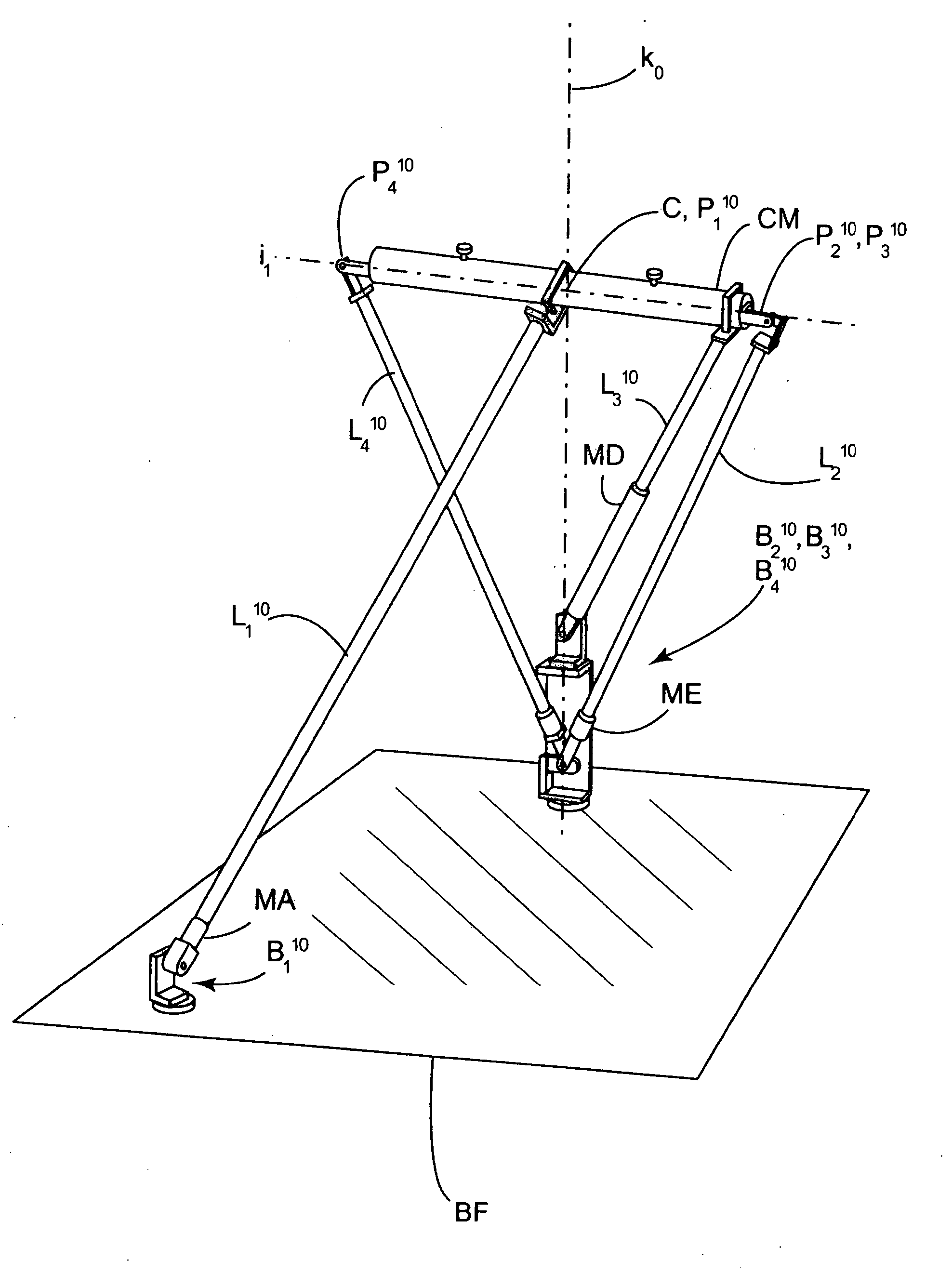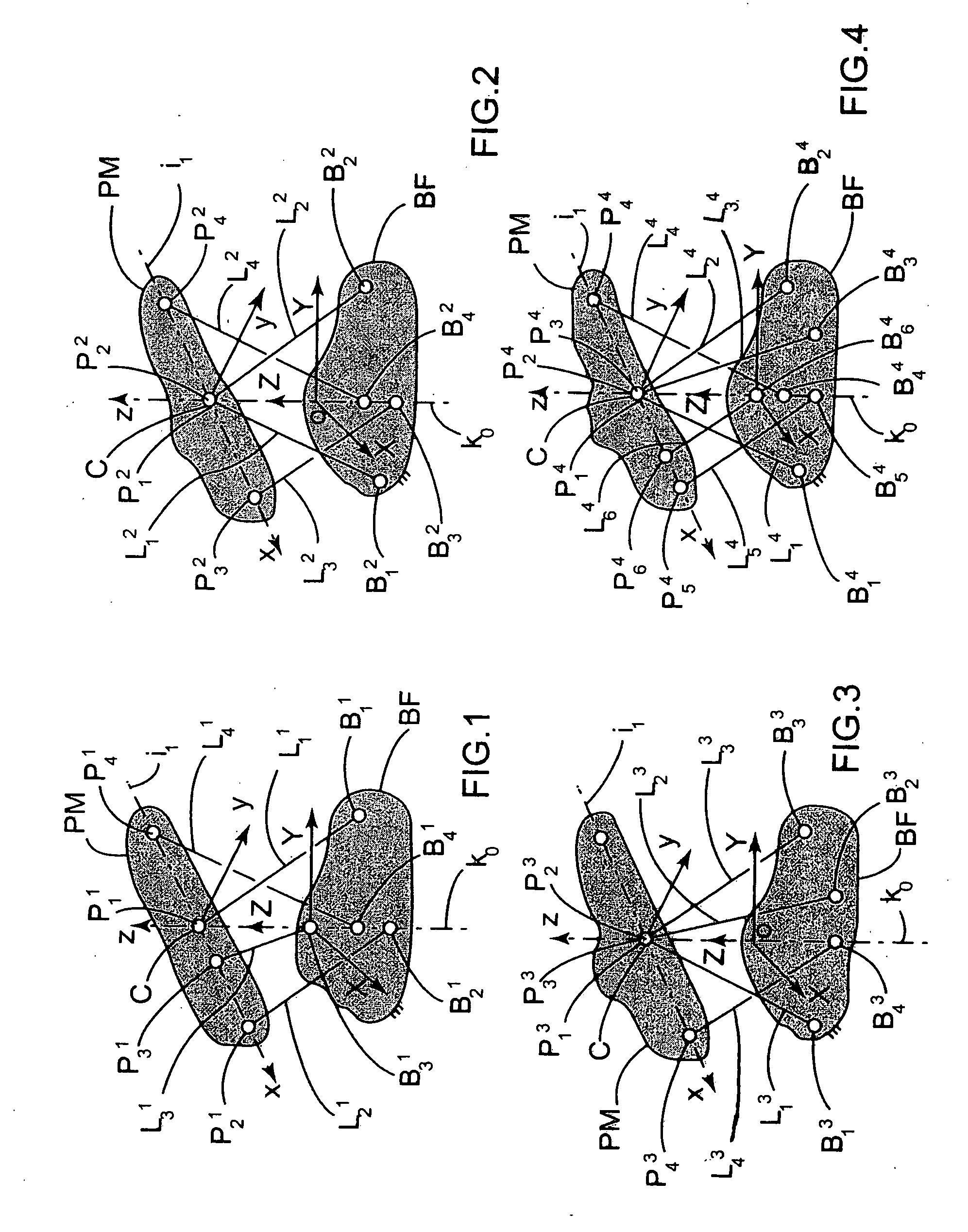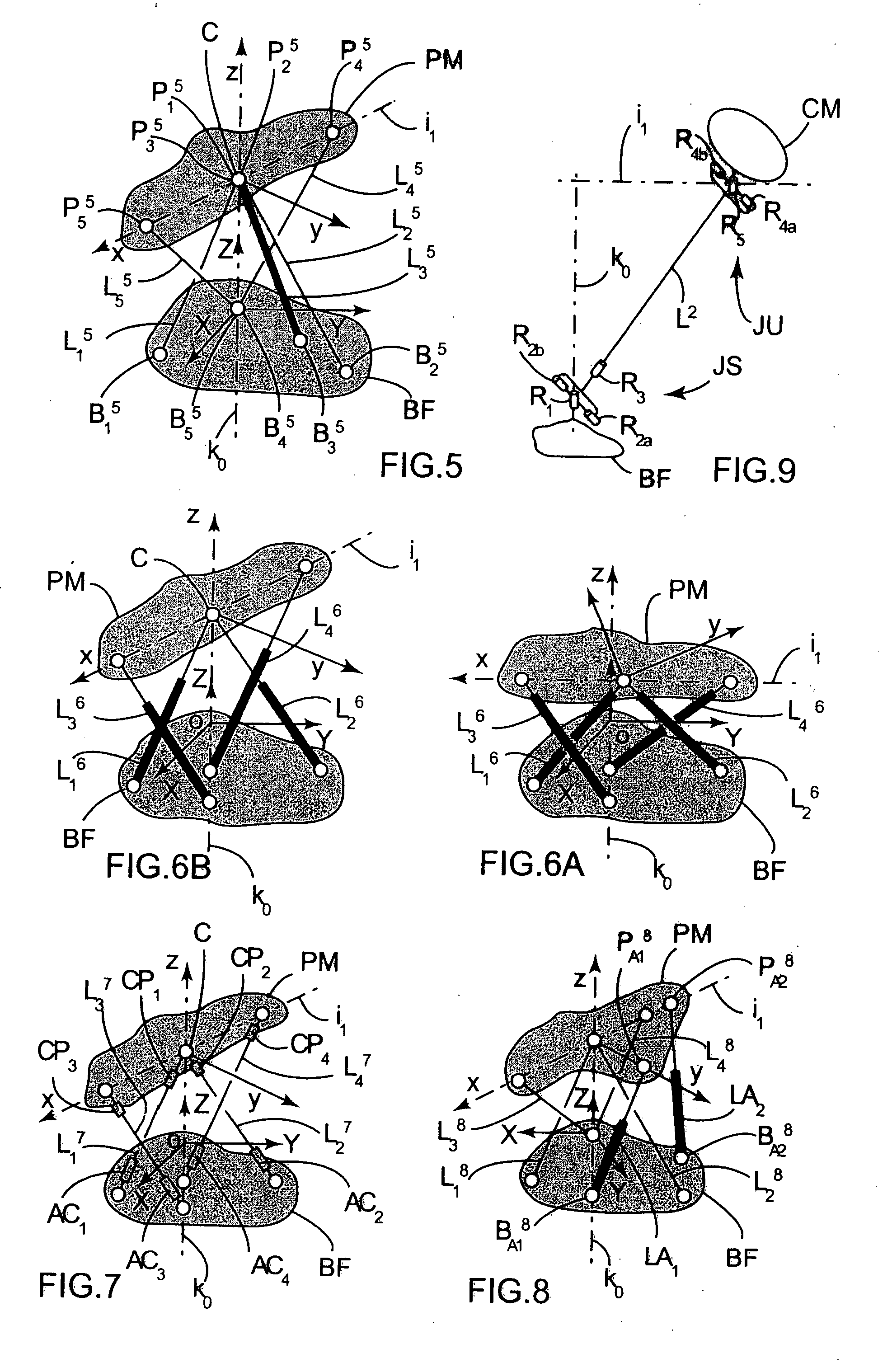Parallel spherical mechanism with two degrees of freedom
a spherical mechanism and parallel axis technology, applied in the direction of mechanical control devices, process and machine control, instruments, etc., can solve the problems of high internal mechanical stress, inability to decouple movements about said axes, and general inutility of rotating the body about its own axis of symmetry
- Summary
- Abstract
- Description
- Claims
- Application Information
AI Technical Summary
Benefits of technology
Problems solved by technology
Method used
Image
Examples
Embodiment Construction
[0050] A mechanism of the invention comprises a fixed base BF, a moving platform PM, and n link elements or “links” L1, L2, . . . , Ln where n is equal to or greater than four (in the figures, a superscript identifies the Figure in question: thus L12 is the first link of FIG. 2). Each link Li is connected to the base BF by a first connection point Bi situated at one of its ends, and to the platform PM by a second connection point Pi situated at its opposite end. A connection point may be a rigid connection (zero degrees of freedom), an elastic connection, or indeed a revolute joint (one degree of freedom in rotation), a universal joint (two degrees of freedom in rotation), or a spherical joint (three degrees of freedom in rotation). The mechanism presents two imposed axes of rotation about which the platform PM can turn: a first axis k0 that is fixed relative to the base PF, and a second axis i1 that is fixed relative to the platform PM. These two axes, which are not necessarily per...
PUM
 Login to View More
Login to View More Abstract
Description
Claims
Application Information
 Login to View More
Login to View More - R&D
- Intellectual Property
- Life Sciences
- Materials
- Tech Scout
- Unparalleled Data Quality
- Higher Quality Content
- 60% Fewer Hallucinations
Browse by: Latest US Patents, China's latest patents, Technical Efficacy Thesaurus, Application Domain, Technology Topic, Popular Technical Reports.
© 2025 PatSnap. All rights reserved.Legal|Privacy policy|Modern Slavery Act Transparency Statement|Sitemap|About US| Contact US: help@patsnap.com



